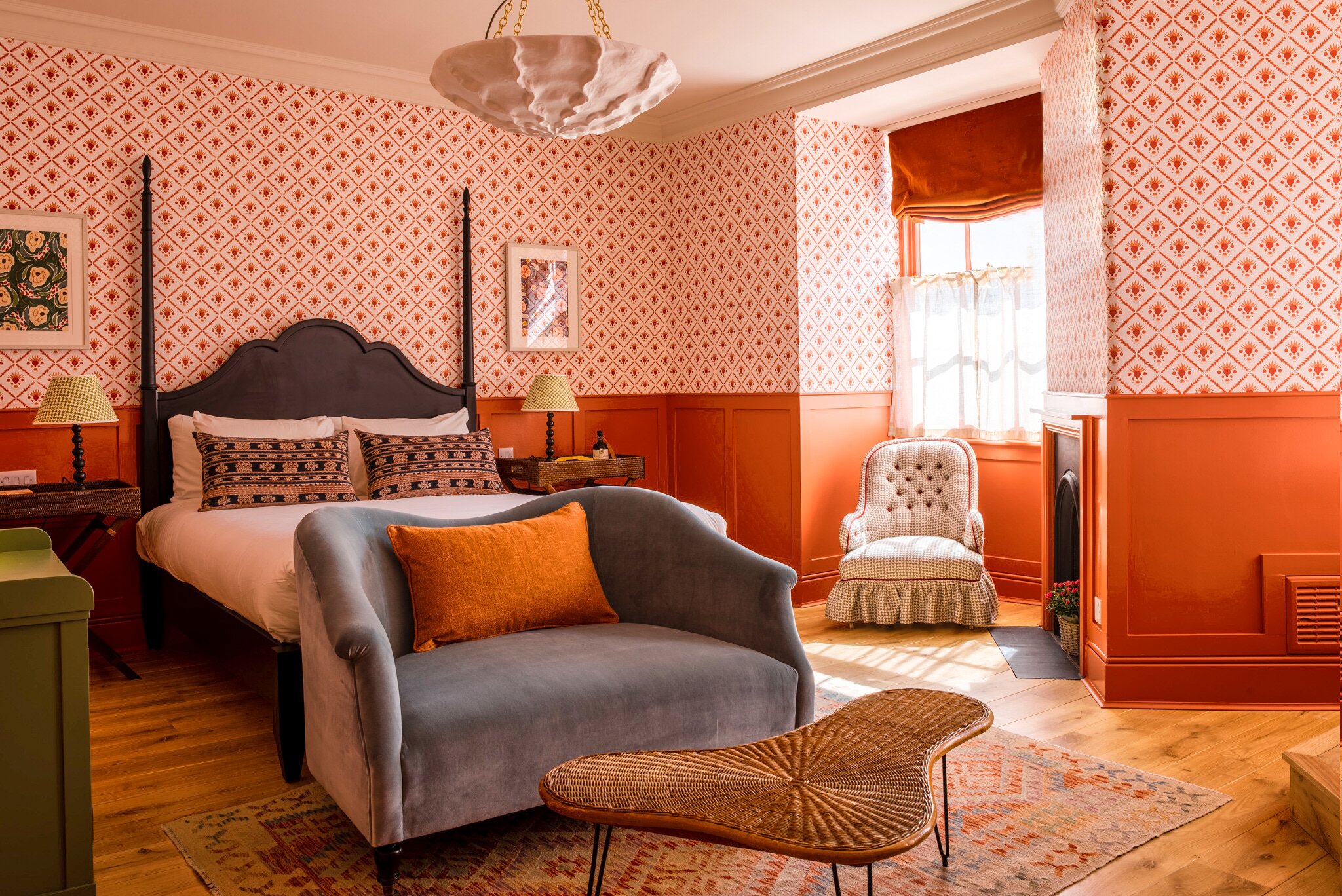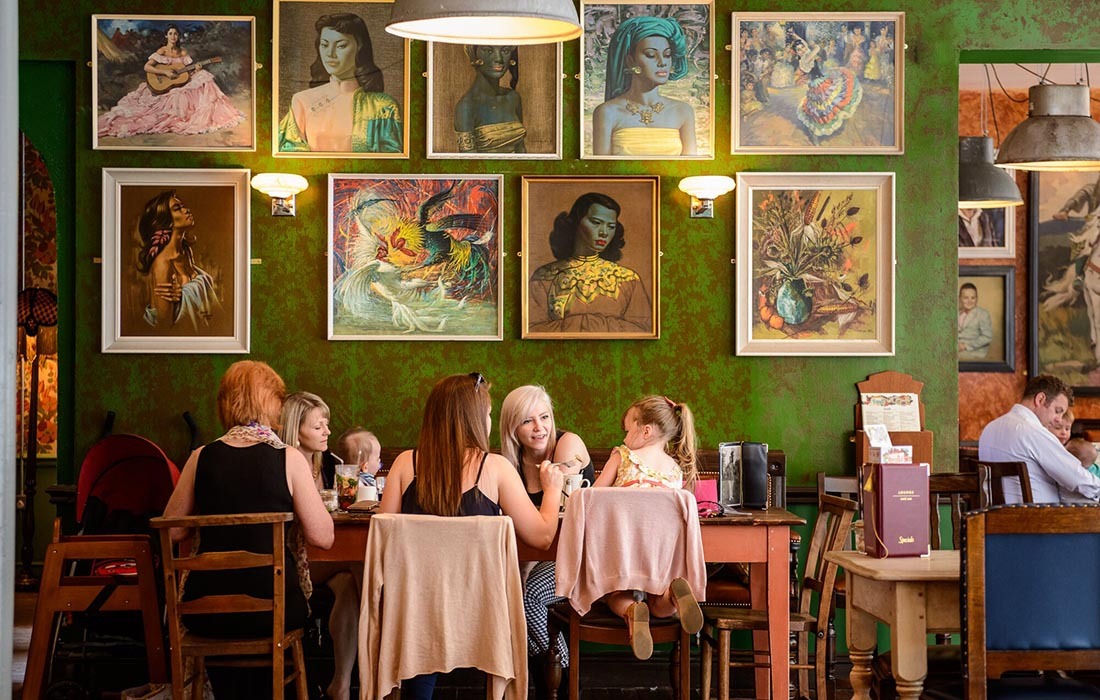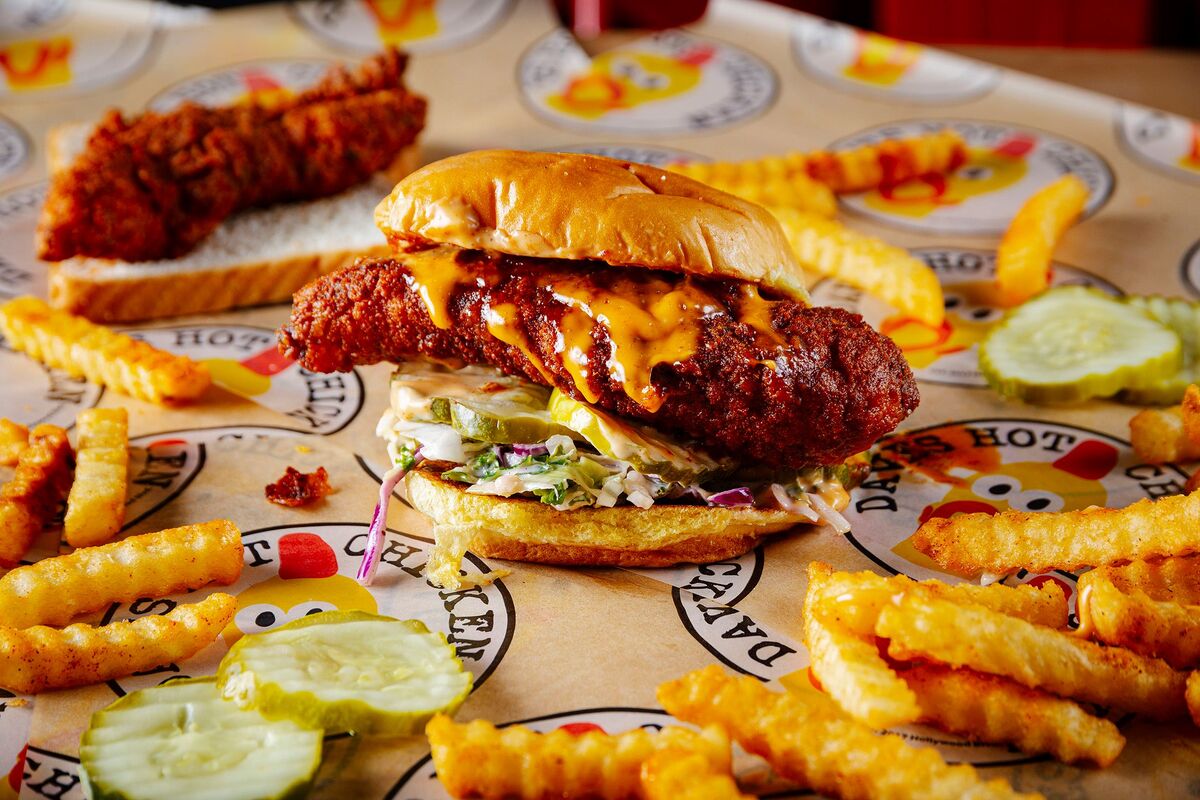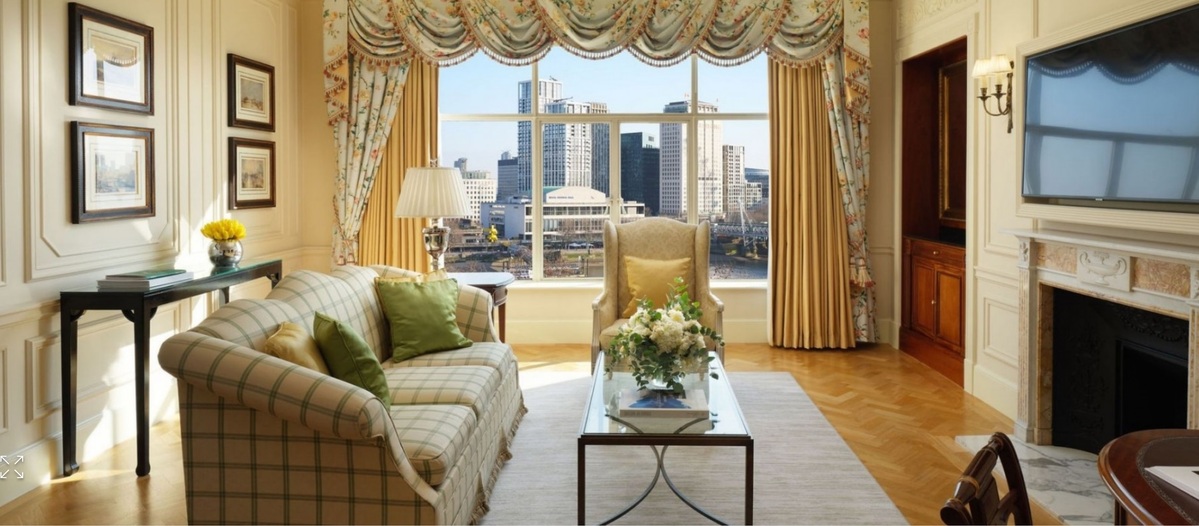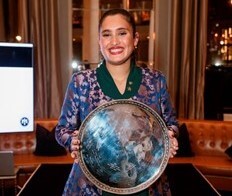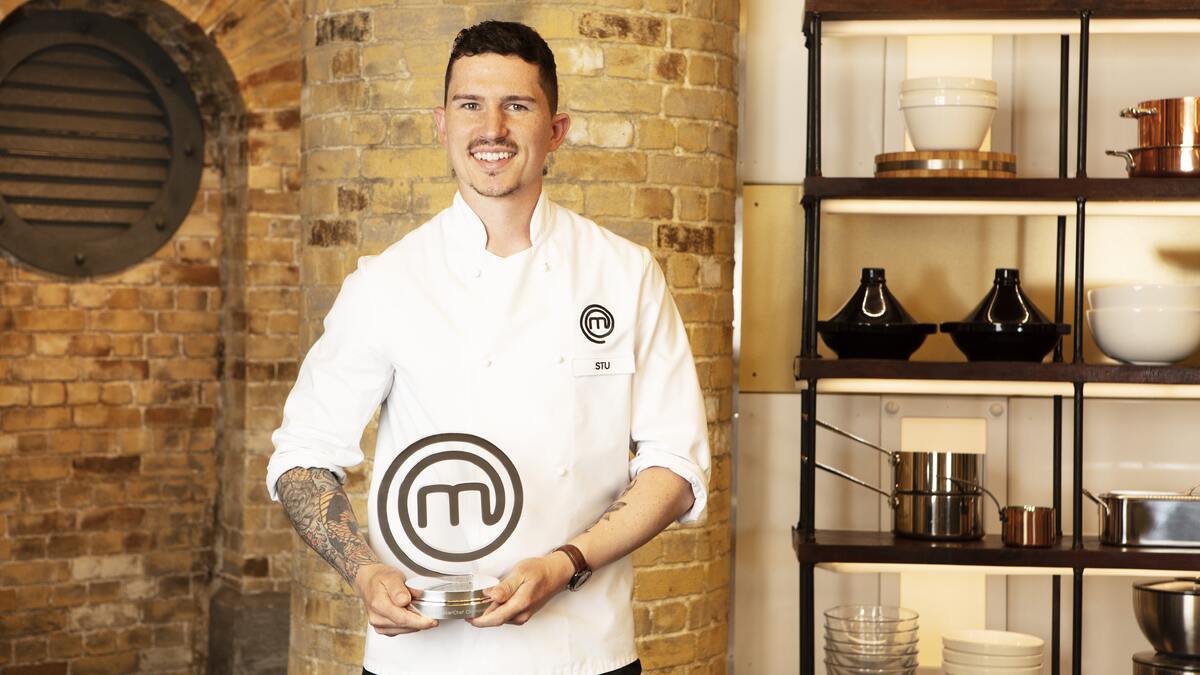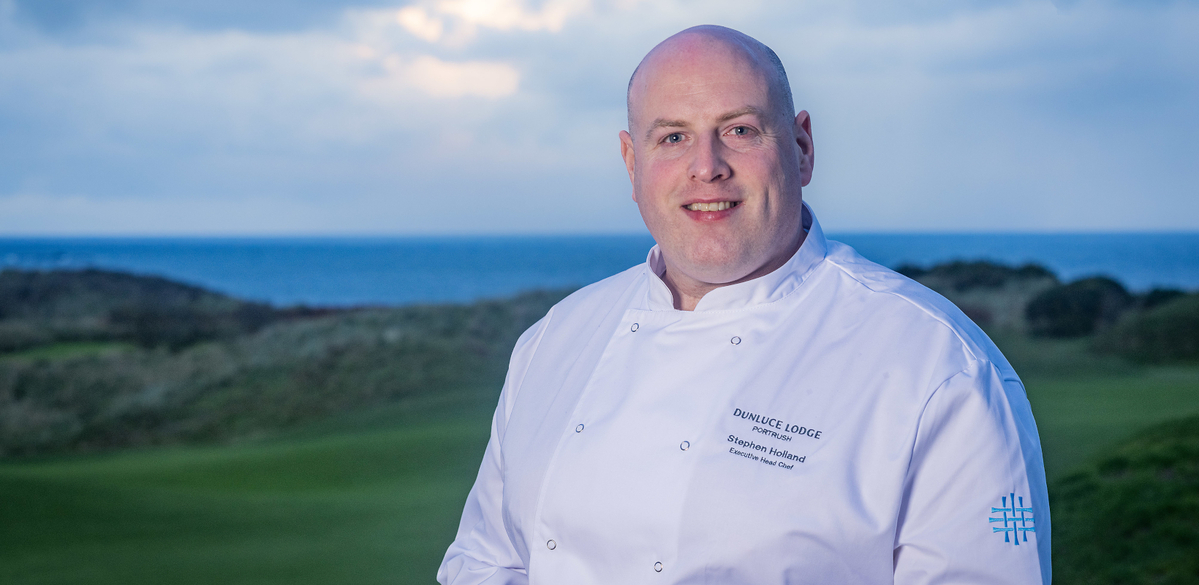Fit for a king: Inside the new Mitre hotel at Hampton Court
The newly opened Mitre, perched on the bank of the Thames, is the first of a series of hotels to be revived by the Signet Collection, positioning its colourful decor and bustling restaurants within the ancient tourist hotspot of Hampton Court. Fiona Sims pays a visit.
Swimmers, SUPs, skiffs and scullers move past at a stately pace on the slow-moving tide, watched by the rosé-sipping occupants of the Terrace at the newly reopened Mitre hotel in Hampton Court on the banks of the Thames.
“The river is life. There is so much more to it than being the Thames,” says Ronnie Kimbugwe, the Mitre’s culinary and operations director.
The 36-bedroom, Grade II-listed property has been a hostelry since 1665. It reopened as the Mitre under new owners on 4 September, incorporating 64-seat, all-day dining and wine bar Coppernose, a 76-cover brasserie and bar called 1665, that large riverside terrace seating 60 diners on the upper deck, with another 60 seats for drinkers on the lower deck, plus the 68-seat Orangery and two conference rooms.
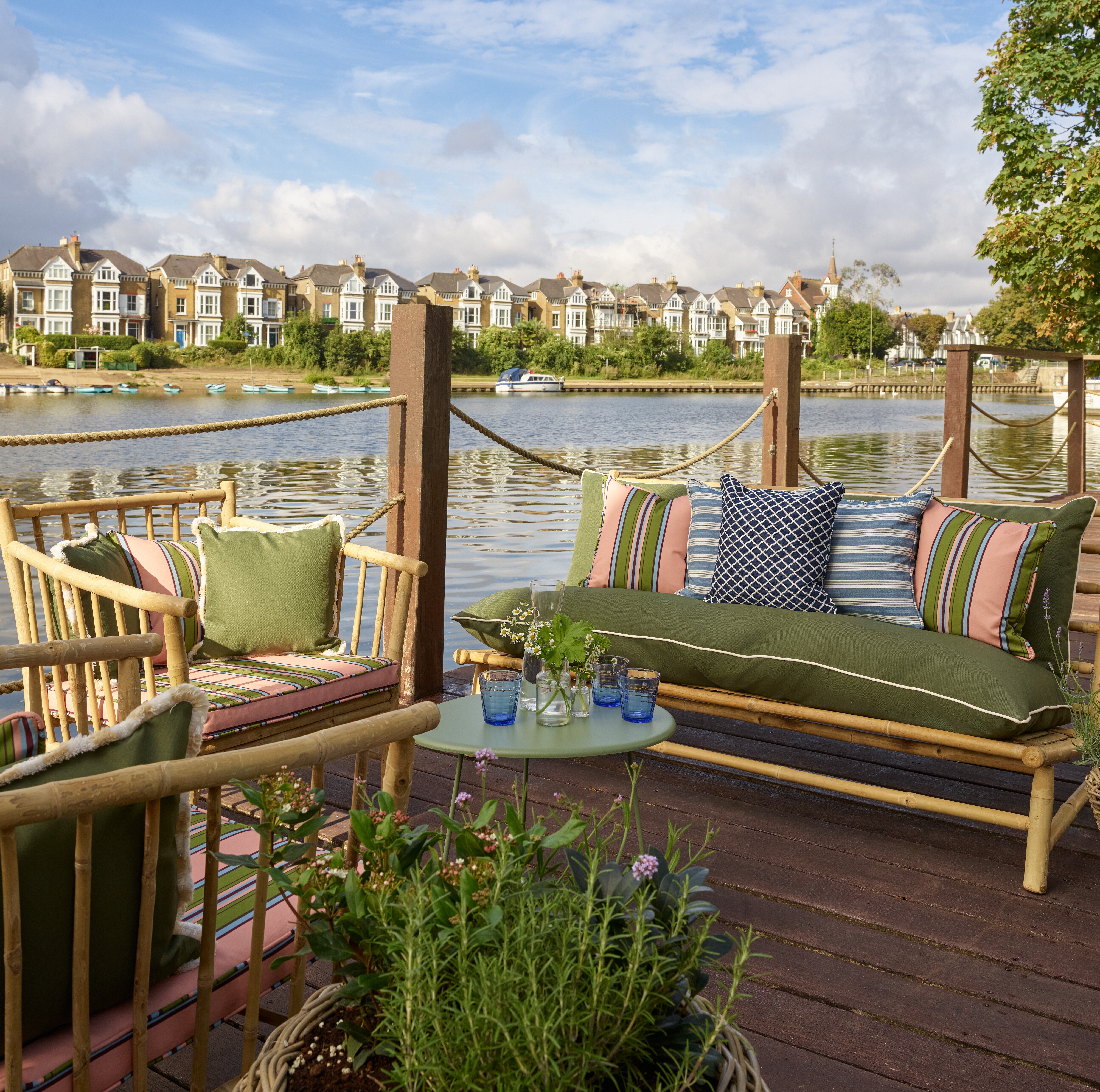
The Mitre is the first in what will be a group of boutique luxury hotels called the Signet Collection, founded by Hector Ross, the former chief operating officer of Longshot Holdings, owner of Beaverbrook hotel in the Surrey Hills and the Bel & the Dragon group of country inns, until its sale in 2018 to pub and brewery operator, Fuller, Smith & Turner.
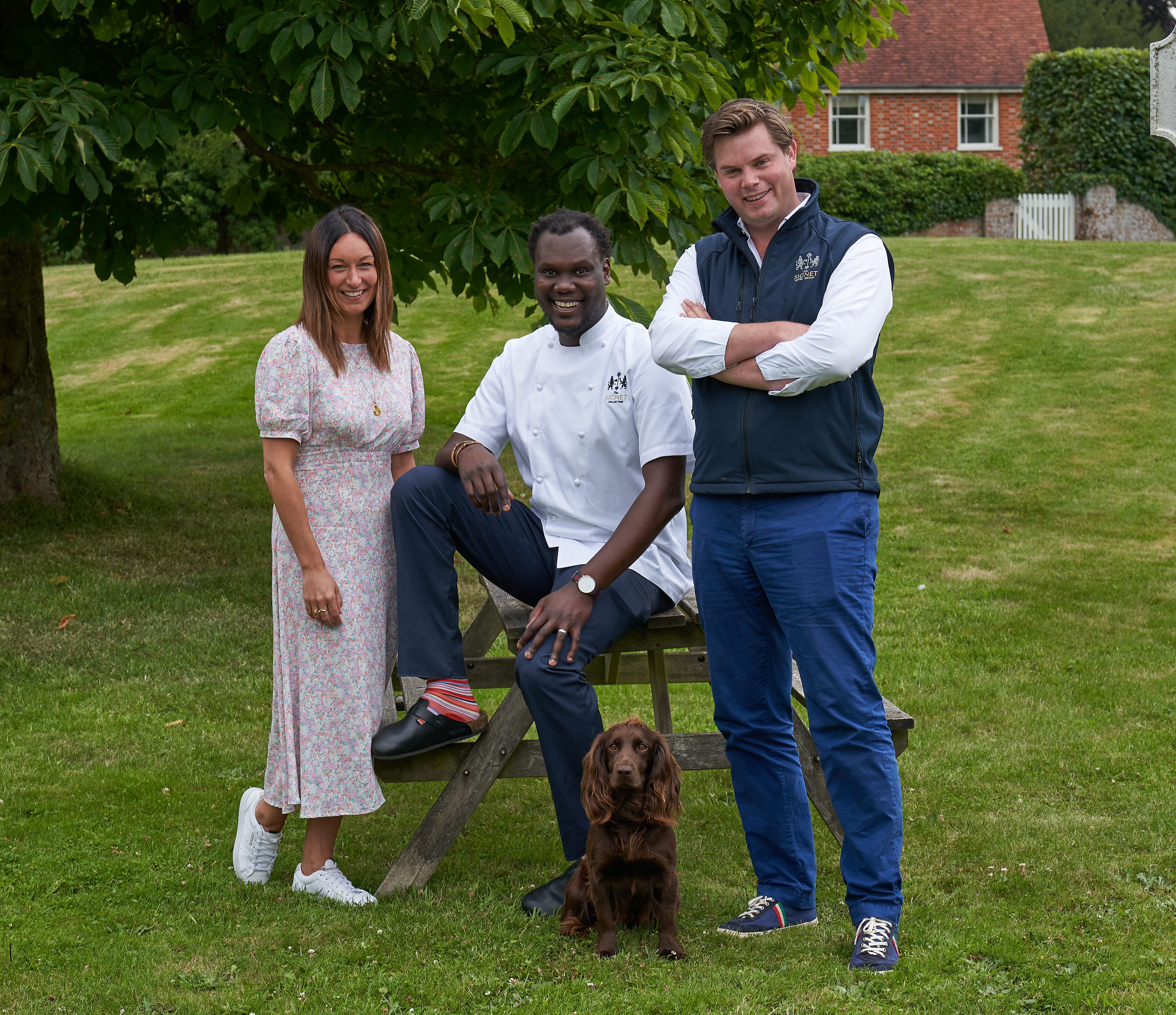
The plan is to take “beautiful yet tired” properties with 30-70 bedrooms and bring them back to life. “Our hotels will all have history; they have stories to tell. We will restore them, reimagine them, layered with a British sense of humour, top-notch F&B and memorable experiences,” announces Ross. He reveals that a second hotel will open in the spring, with the location to be revealed in due course, with one more opening every year for the following four years, building the collection to six hotels.
Destinations? All will be in the south, reveals Ross, who cites Birmingham as the cut-off point. “Don’t be surprised if one springs up near Highclere Castle, with its two million visitors, or Blenheim Palace, with its 2.5 million visitors,” he hints. Hampton Court Palace, which is just over the road from the Mitre, received 1.4 million visitors last year and Ross and his team are working closely with the historic royal property.
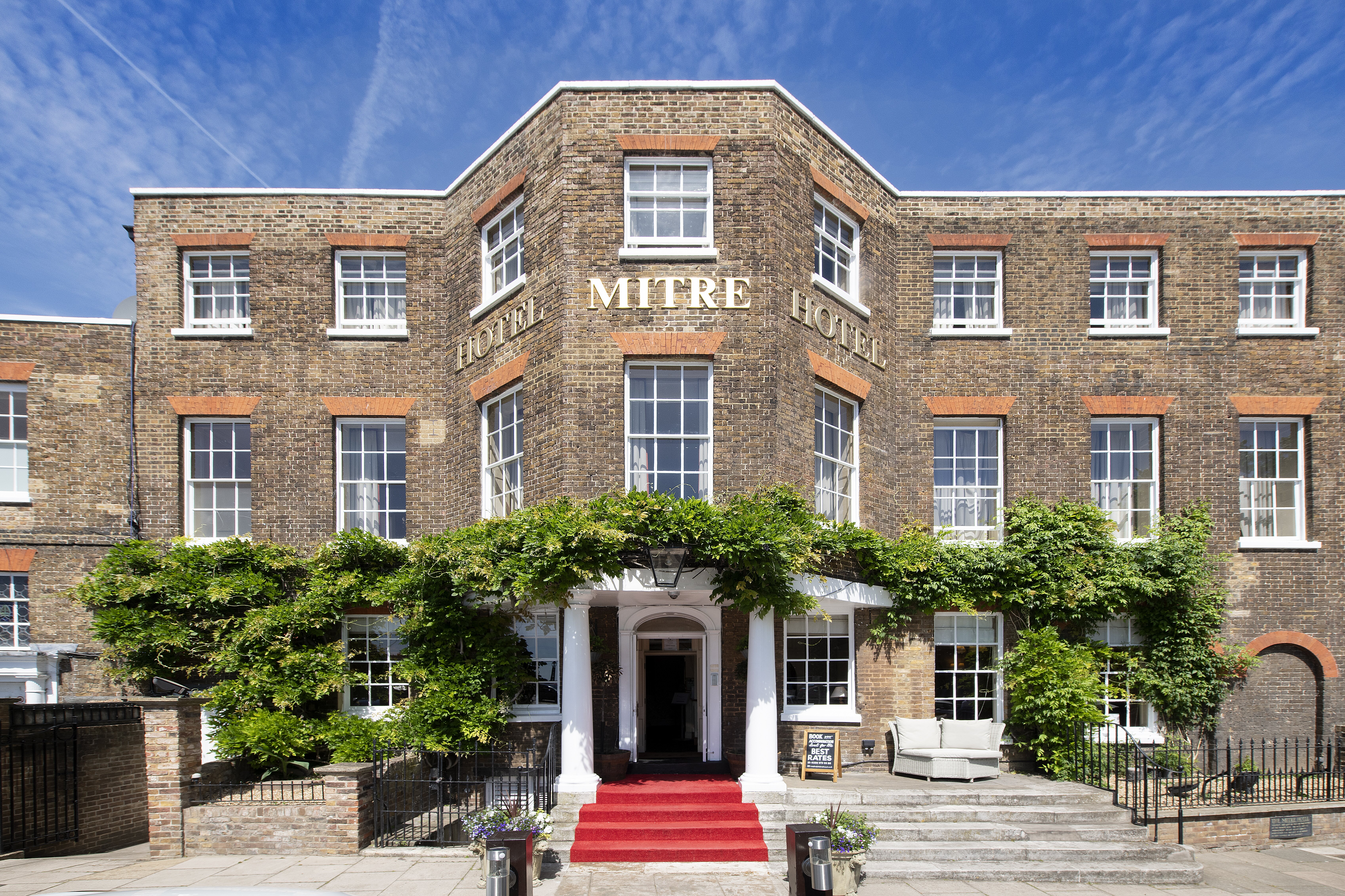
Star quality
The Mitre was built to provide overflow space for guests of King Charles II at Hampton Court Palace, though its origins date back even further to the reign of Henry VIII, who pops up regularly in the hotel, such as in the house Six Wives ale.
The hotel’s more recent heyday, by all accounts, was the 1950s and 1960s, when Shirley Bassey dropped by for lobster thermidor. It was revived again in the early 1990s by a local family, who added a show-stopping, two-storey riverside rotunda, which houses the two restaurants. But the hotel had seen better days of late, until Ross swooped in, buying it for an undisclosed sum at the beginning of the year. And with a loan of £3.7m from OakNorth Bank to upgrade the property, Ross has elevated it from a three-star to a five-star, or near about.
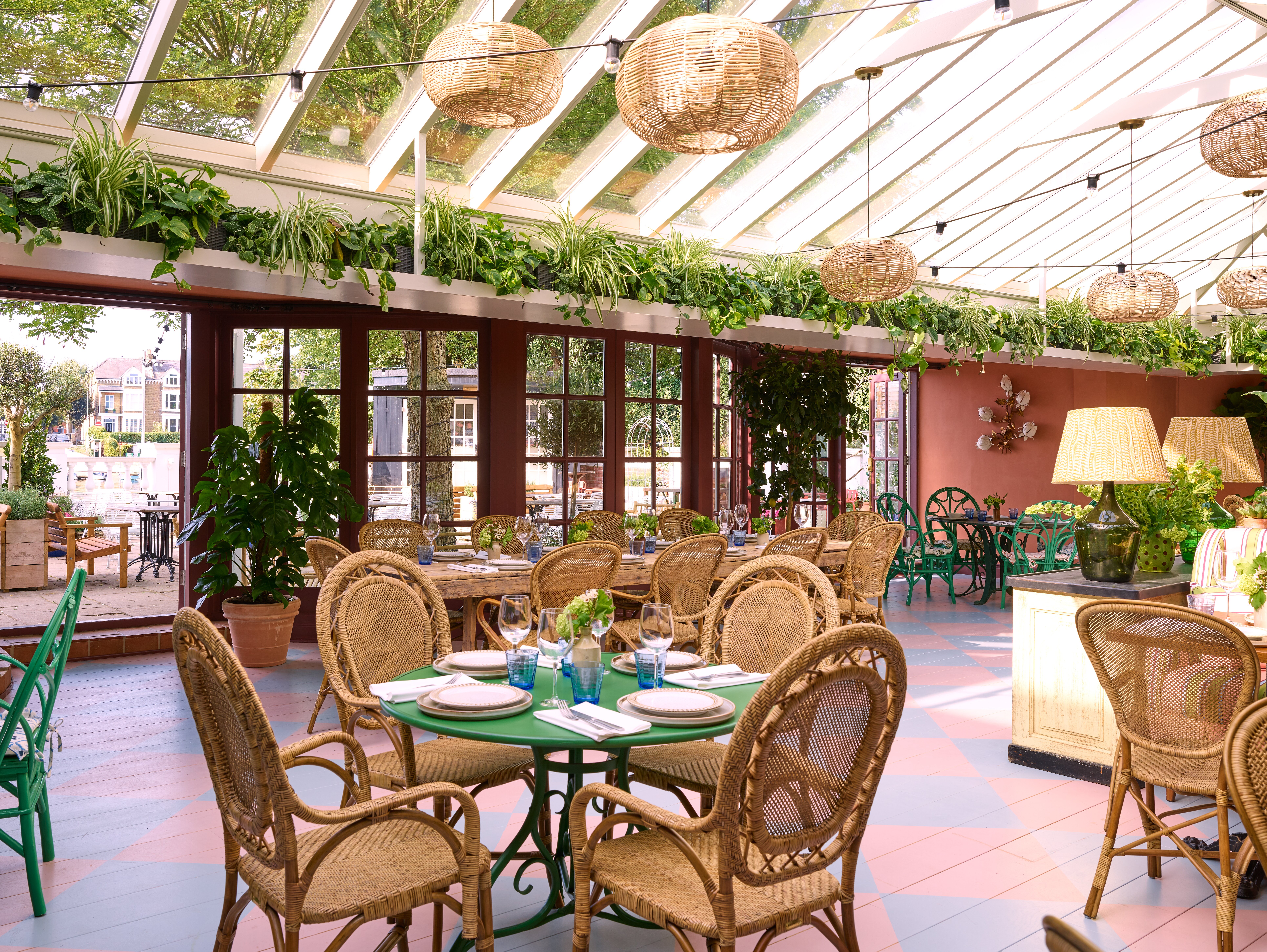
Interiors are by designer Nicola Harding, who previously teamed up with Ross at Beaverbrook, when he was part of the opening team. She has worked to a brief that combines “quirky British sensibility with elegant, authentic luxury” in an on-trend mixture of old and new. The rooms are a riot of colours, from the bold, richly hued and patterned wallpaper (birds are a theme) to the 230 different paint colours deployed across the hotel.
This is combined with Ross’s generous approach to hospitality, from being greeted on arrival with a glass of Hampshire fizz to the help-yourself whisky decanters in the library, the cookies and soft drinks on your borrowed boat (book a suite and get a boat trip thrown in) and the complimentary bottle of King’s Ginger waiting in the bedrooms, which start at£180 and rise to £592 for the Henry VIII suite.
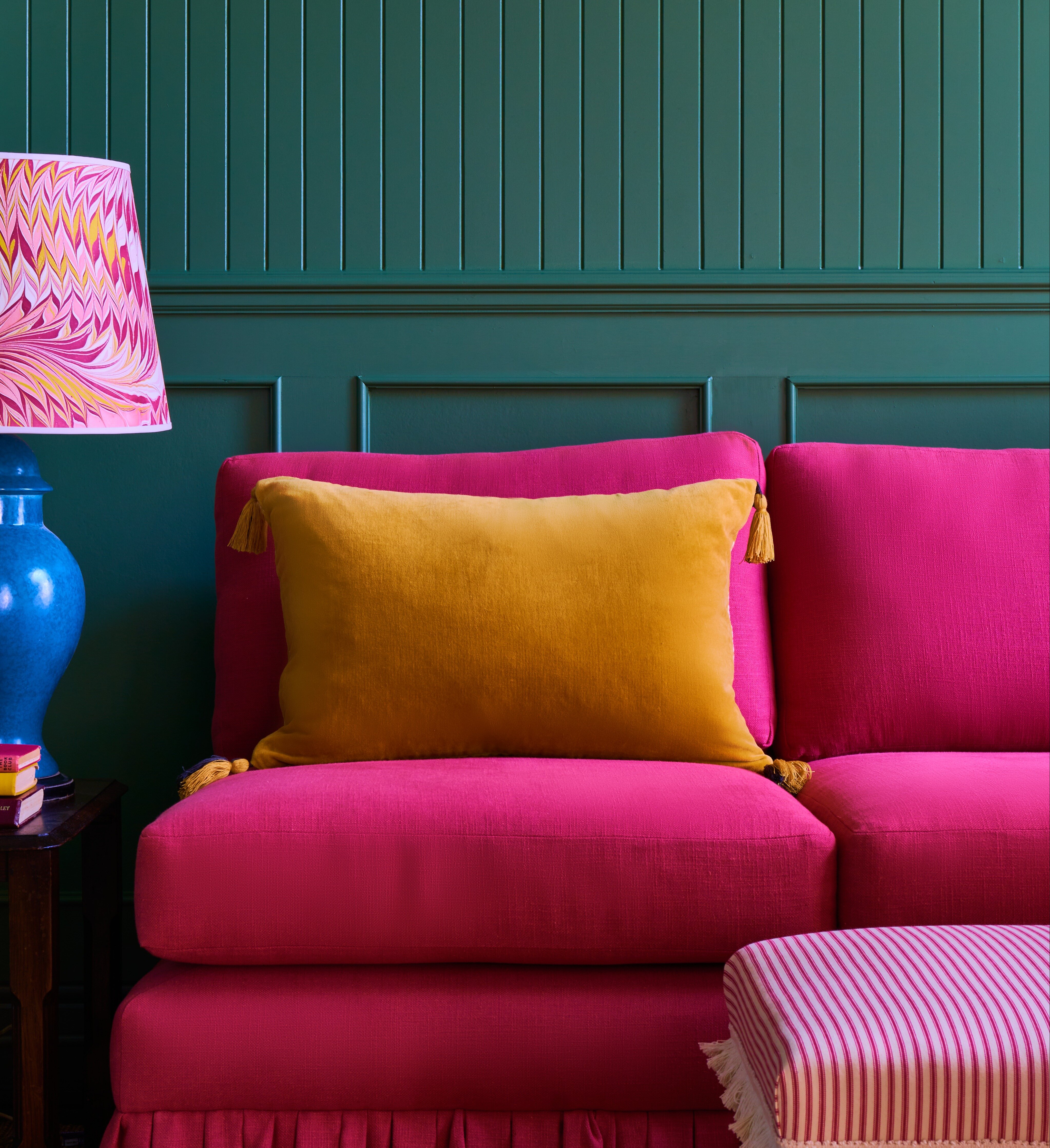
Harding says she was inspired by the bright, playful colours of British regattas. “We wanted to accentuate the qualities of each space,” she explains. When it comes to the restaurants, this translates as light and airy for Coppernose and rich and atmospheric for 1665. With its central bar, the river backdrop and outside terrace, plus the impressive footfall crossing the nearby Lutyens-built Hampton Court Bridge, 1665 has already become a hub for Hampton Court.
Great taste
F&B is one of the Signet Collection’s four cornerstones, declares Ross, who counts the Pig’s Robin Hutson as a family friend and mentor. “I want you to go to bed and find a truffle with popping candy on your pillow, and I want you to wake up in the morning and smell the croissants in the corridor on your way to breakfast.
“Our concept for all of this is let’s ‘hero’ the food in buildings that have history and heritage. It was born of the Bel & the Dragon Group, but it’s bigger and better.”
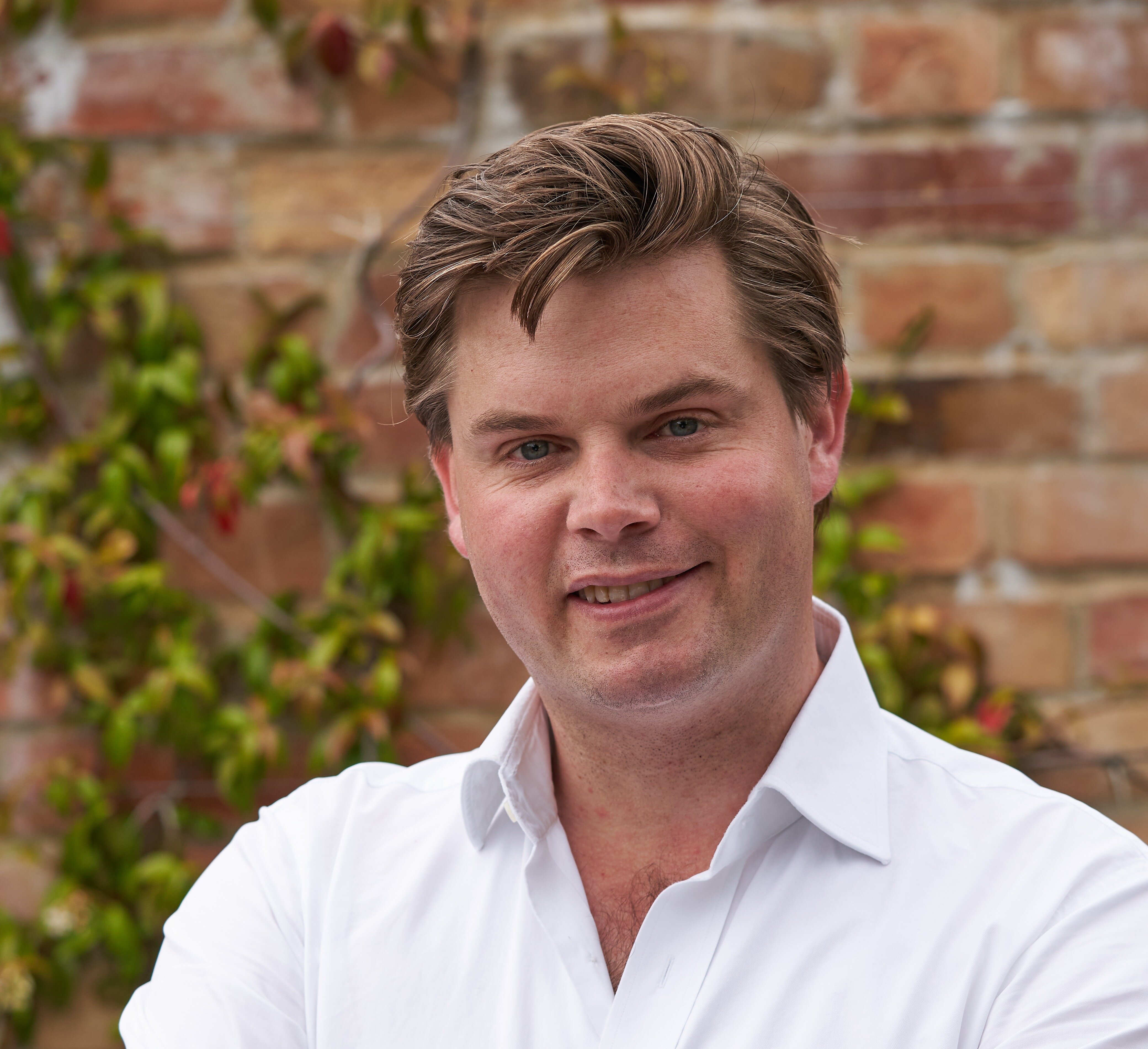
The Bel & the Dragon, further up the Thames, was the first of seven country inns that Ross ran after “joining a couple of chaps” who had bought a 14th-century pub with 10 bedrooms in Cookham. Earlier in his career Ross created successful event catering brands at British sporting events for establishment favourite Green’s Restaurant of St James’s, then in a joint venture with Compass Group.
“We installed a good chef, burnt out from working for the likes of Ramsay, and asked them to make great, homecooked food. It rolled out well,” grins Ross.
Kimbugwe was one of those burnt out ex-Ramsay chefs. “Ronnie is a great guy. I’m sure he won’t mind me saying that before he came to us, he had worked too many hours and crashed too many mopeds. He just wanted to live in the country and have a dog,” says Ross.
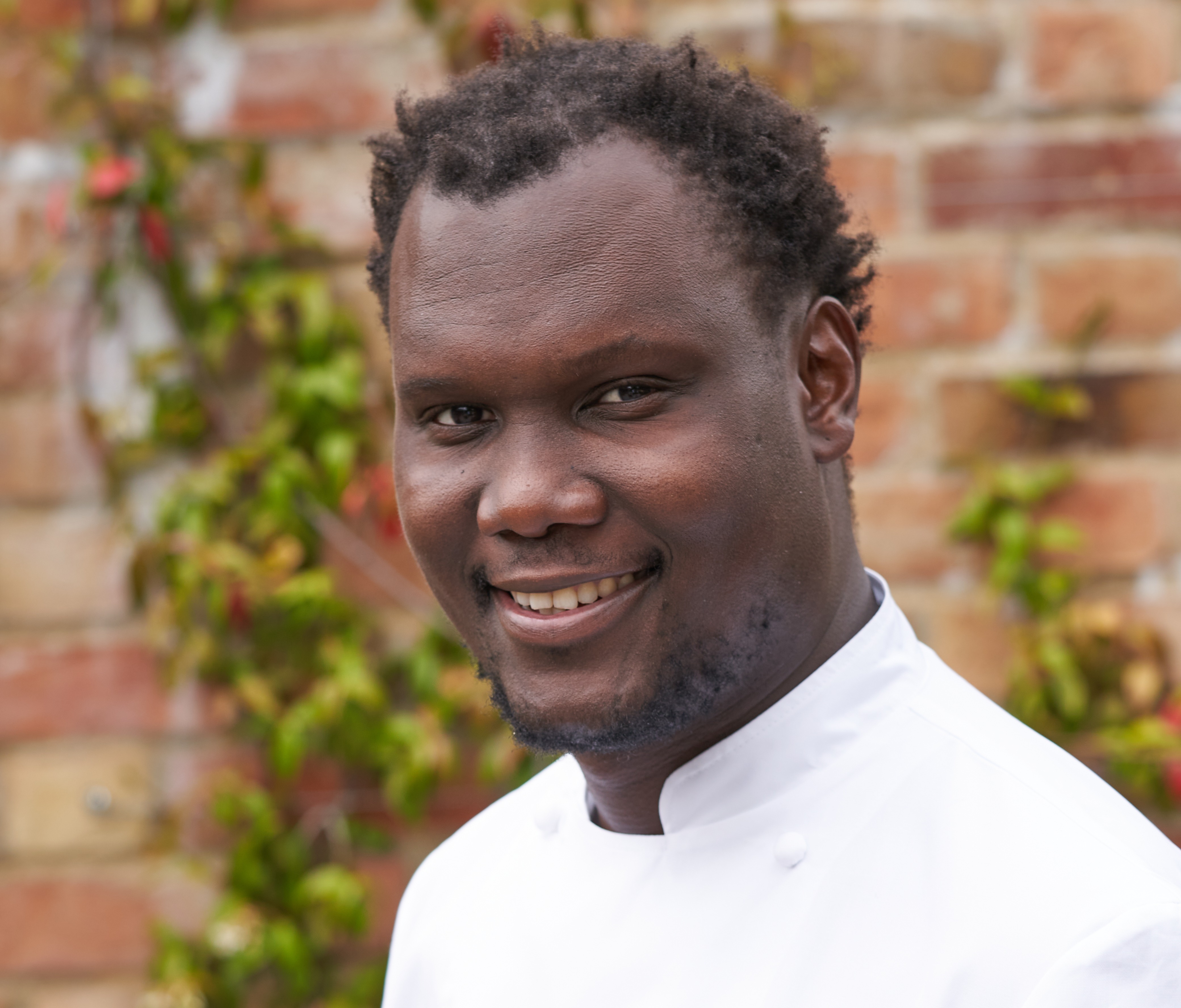
Does Kimbugwe mind? “I had been working for Gordon Ramsay Holdings for over nine years. It was alpha vs alpha and I went in all guns blazing. I was just surviving, but it was all part of the learning process. The Ramsay style of food is the skeleton to my cooking,” he says. He names Angela Hartnett and Matt Abé, now co-chef-patron at three-Michelin-starred Restaurant Gordon Ramsay in London, as mentors.
The food in both restaurants is beautifully presented, well-executed and imaginative, with more finesse in 1665, which boasts double the average spend of Coppernose (Henry VIII’s nickname), at £45.
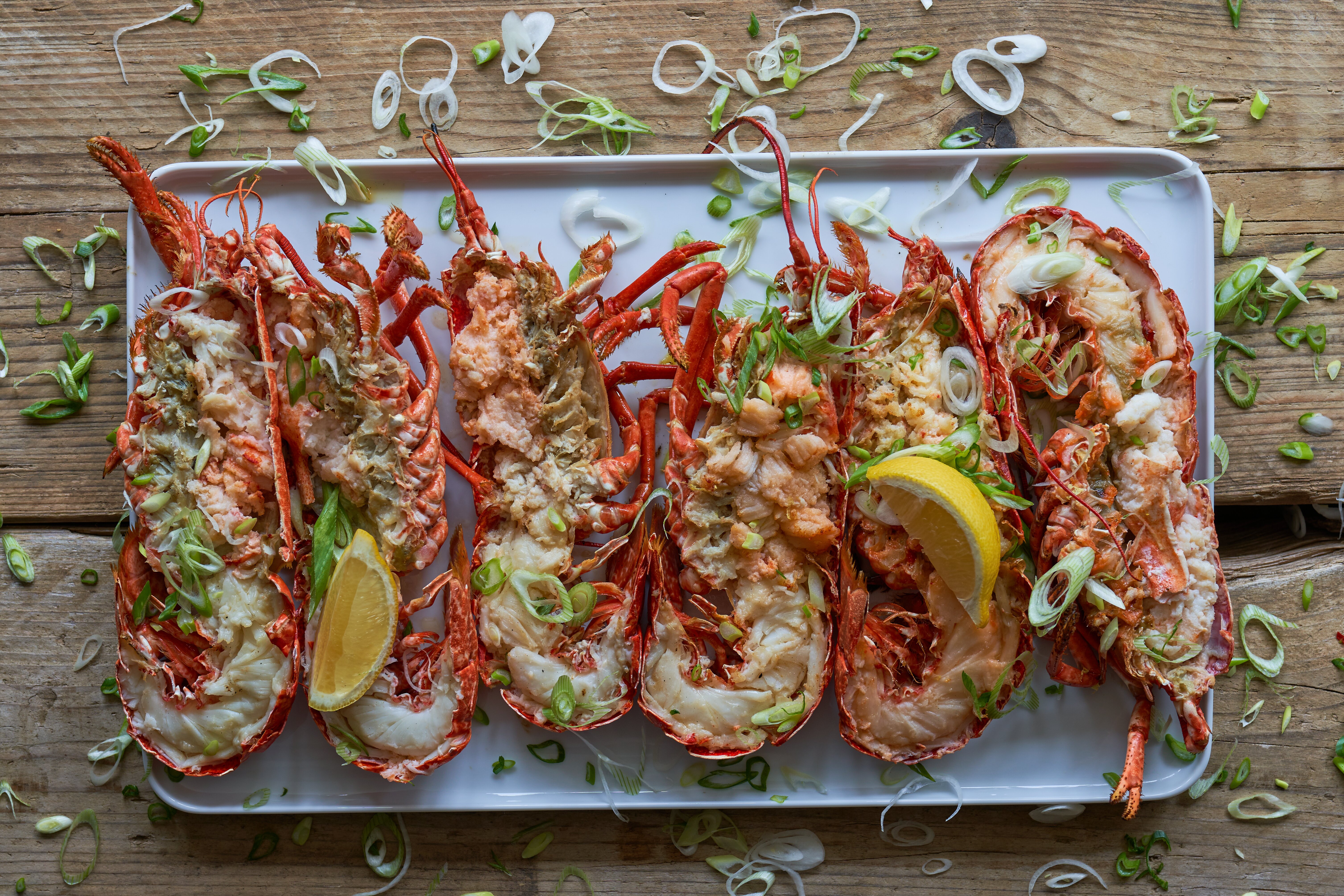
“I describe it as modern European with a hint of flavours from all over the world,” says Kimbugwe. Meat dishes are notably scarce, making up just a fifth of all dishes – Kimbugwe is a fish and vegetable man, and so are most of his guests, he reasons. Highlights include the Hampshire burrata and burnt orange with dandelion syrup and toasted cashew nuts (£11); and seared sashimi tuna with sesame crust, radishes, pickles and wasabi (£14) in Coppernose. At 1665 you can expect a crab ‘toastie’ with harissa, spiced mayo, lime and apple (£13); and Cornish sole meunière with capers, burnt butter and parsley (£23).
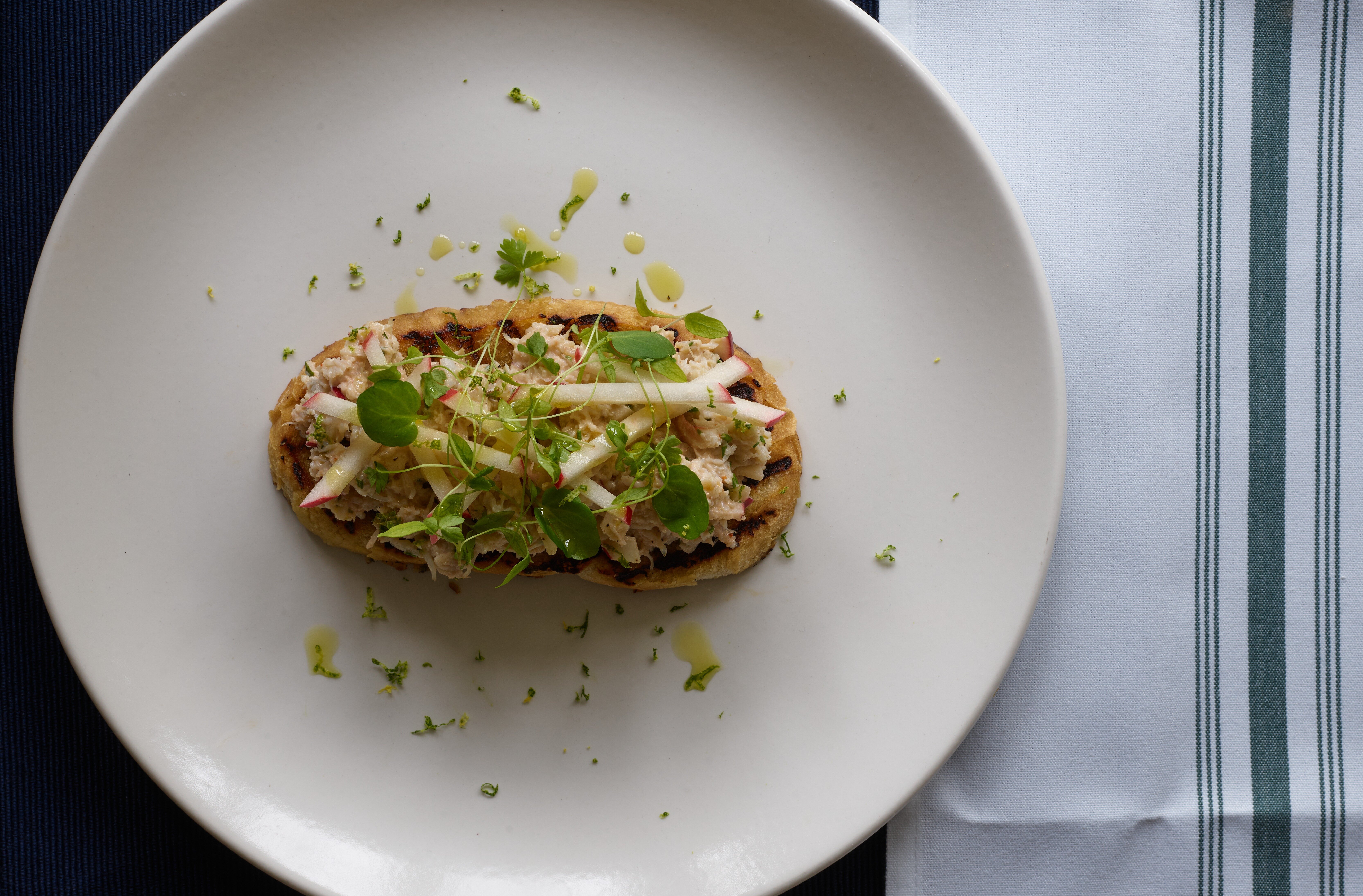
The breakfast menu is refreshingly innovative with its mango smoothie bowl (£8) and sweetcorn fritters with avocado, tomato and smoked paprika salsa (£9). “Just as the hotel is full of colour, we have tried to do the same with the food,” explains Kimbugwe.
Kimbugwe, who has a 14-strong brigade, floats around the sections, while his head chef, Justin St Claire, is on the pass. “I’m omnipresent,” he grins. “I want passionate people working for me – I want them to know they are part of something awesome.”
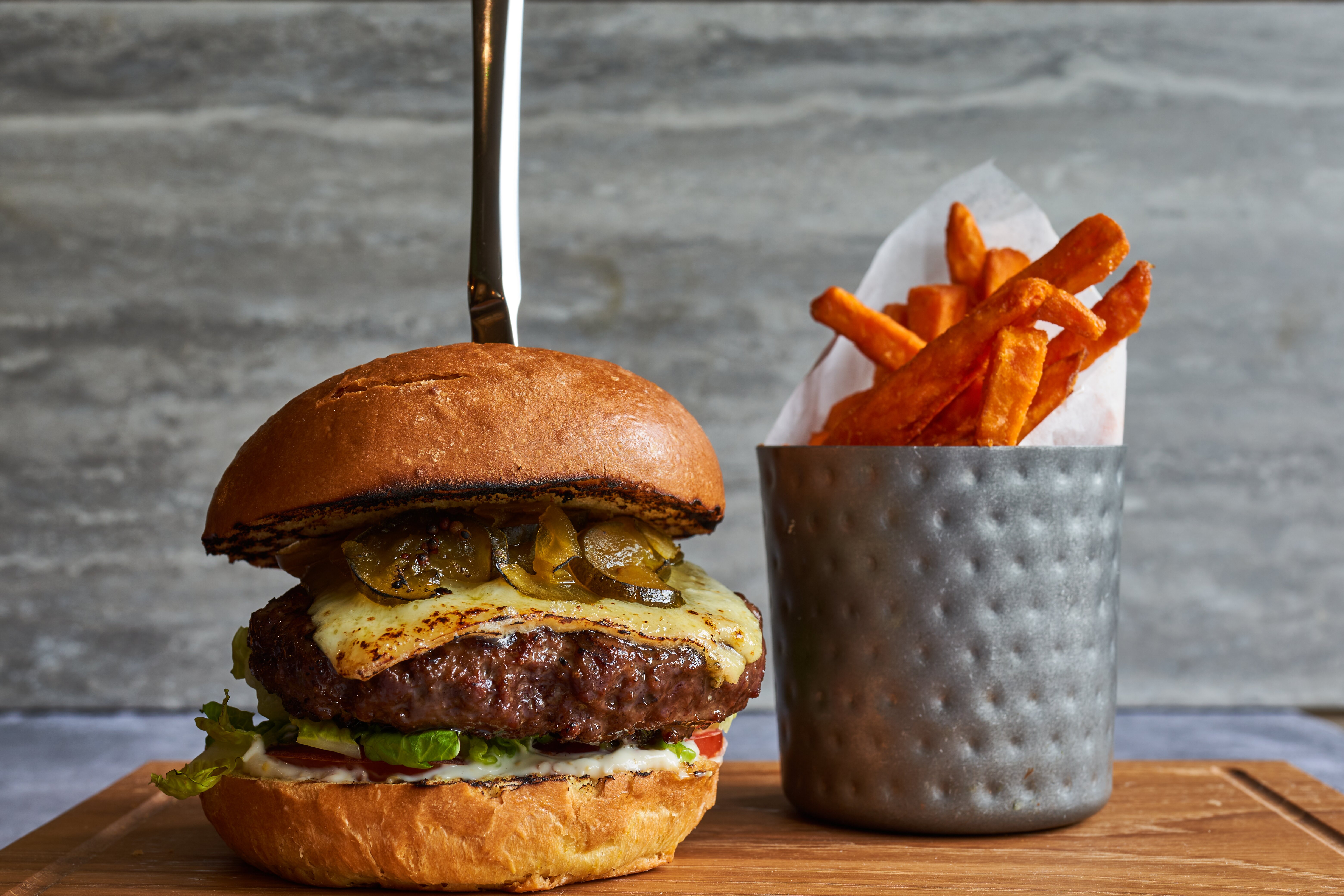
Much is made of the British produce, which is ‘heroed’ – a word you will hear repeatedly here – at every opportunity. Some of it is hyper-local, from the two-acre Hampton Court Palace kitchen garden (in exchange, Kimbugwe has promised to teach six of the palace gardeners how to cook), as well as tomatoes from the Isle of Wight, burrata from Hampshire, and seafood from Brixham in Devon, near where Kimbugwe grew up.
There are hampers for guests to pre-order for picnics or boating, filled with boxed-up dishes plucked from the menus. Plus a vintage food truck called Polly, which offered ice-cream, coffee and pastries throughout the summer, will now switch to hot chocolate, brownies and mulled apple juice with a slug of sloe gin for the colder months. “It’s about championing the brand at every opportunity,” says Kimbugwe.
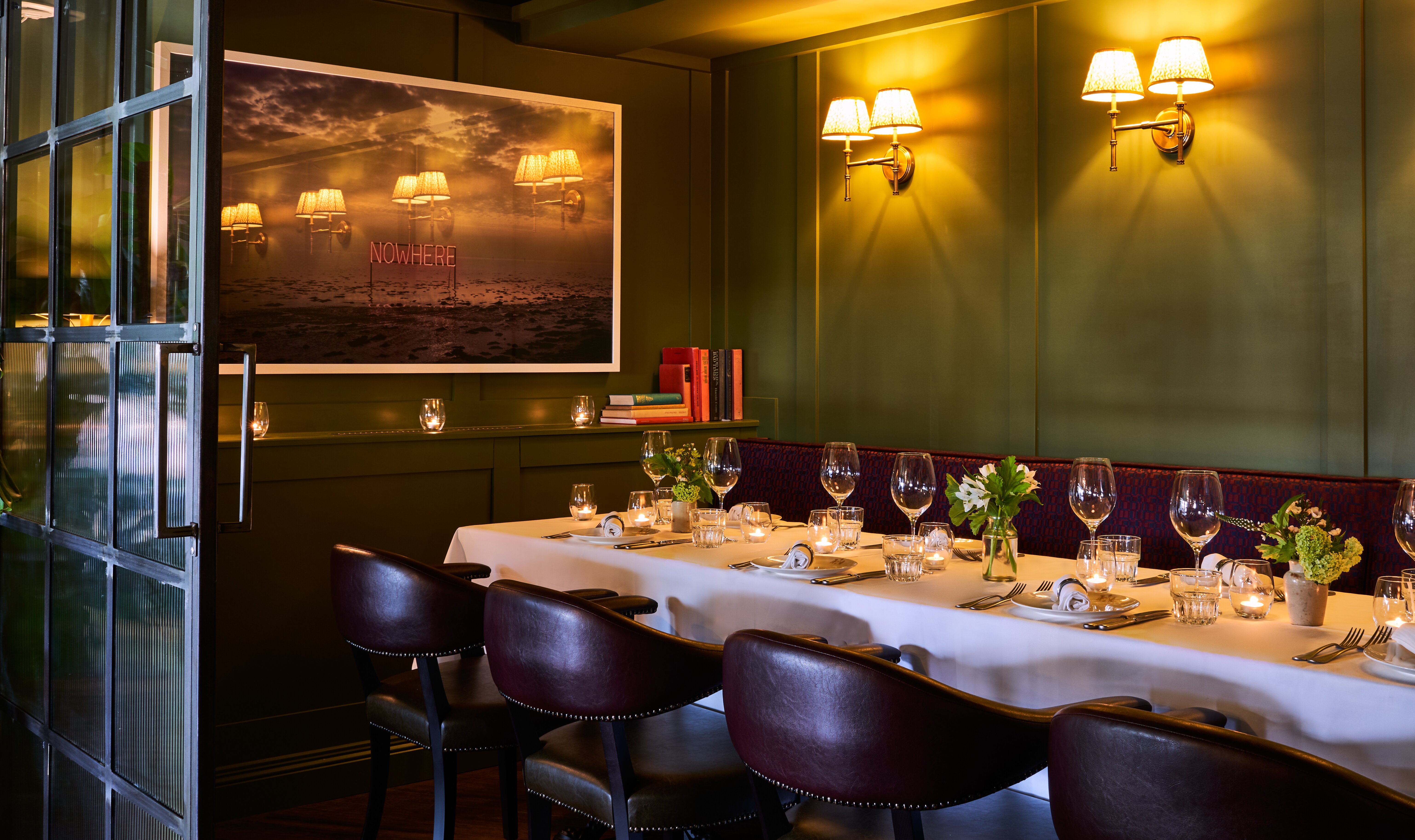
We can be heroes
Kimbugwe and Ross hero their people at every opportunity, too – just don’t call them staff. “I hate that word. We all work as a team,” says Ross. “We have job descriptions, of course, but we don’t necessarily work in a hierarchical way. We lead by example.”
Consequently, Ross is in the process of establishing a hospitality academy, working with other hoteliers, with the aim of attracting more Brits into the industry. “Hospitality is a dying art in this country – we have long been relying on our European friends,” he says.
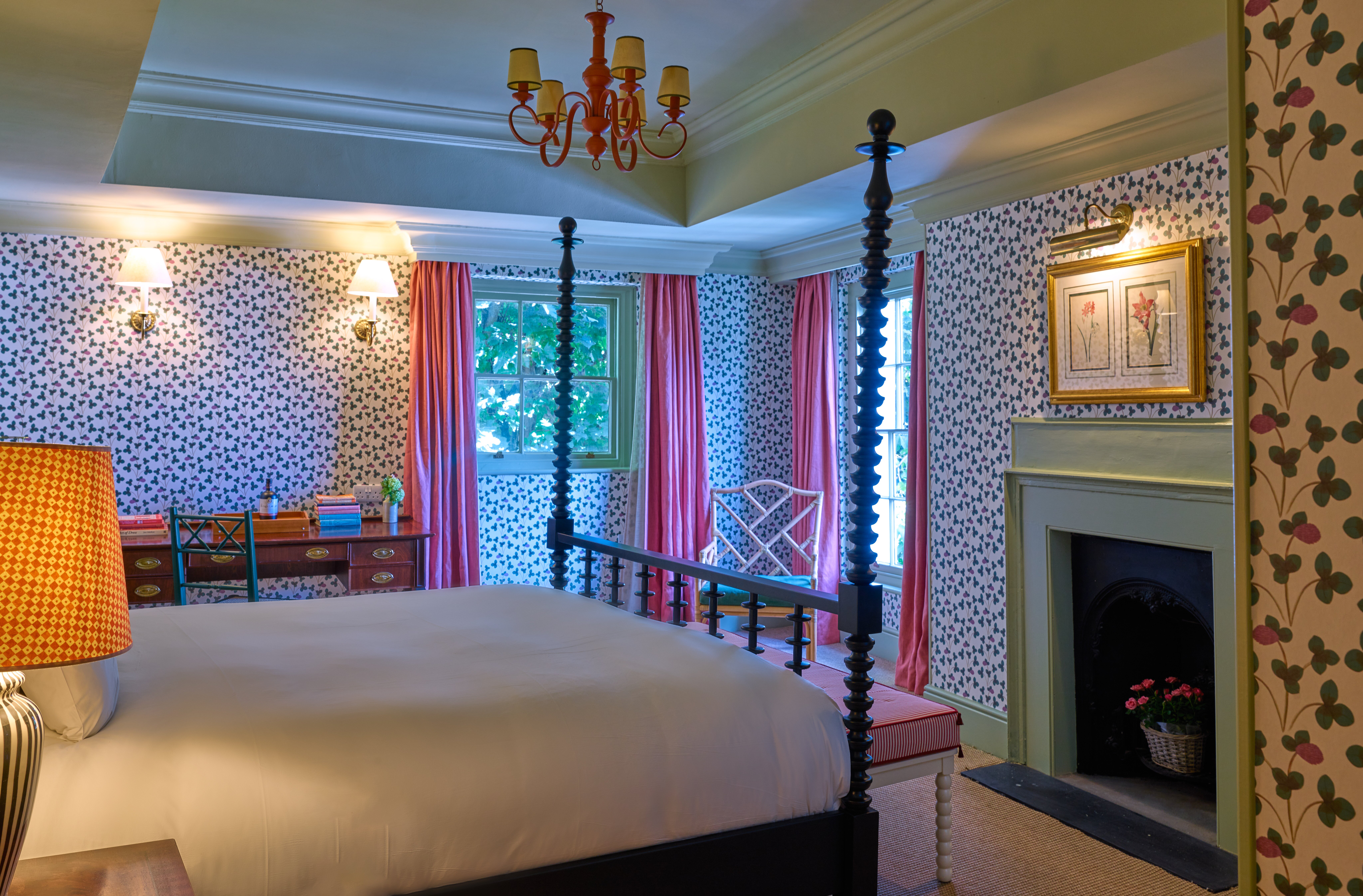
In fact, half of the 52 staff at the Mitre come from an entirely different industry, with many of the floor team from the airline and retail industries, casualities of the pandemic. “We put in ads saying, ‘superstars needed’ and there was this influx,” says Ross, who also has plans in place to attract people from Commonwealth countries.
“A hotel is only as good as the people in it. And we can’t grow this business if we don’t look after our people,” reasons Ross, who reveals that 70% of the tronc is distributed to all the team (four senior managers excluding), with 30% retained for educational trips, new bits of kit, plus netball and five-a-side football teams and the like.
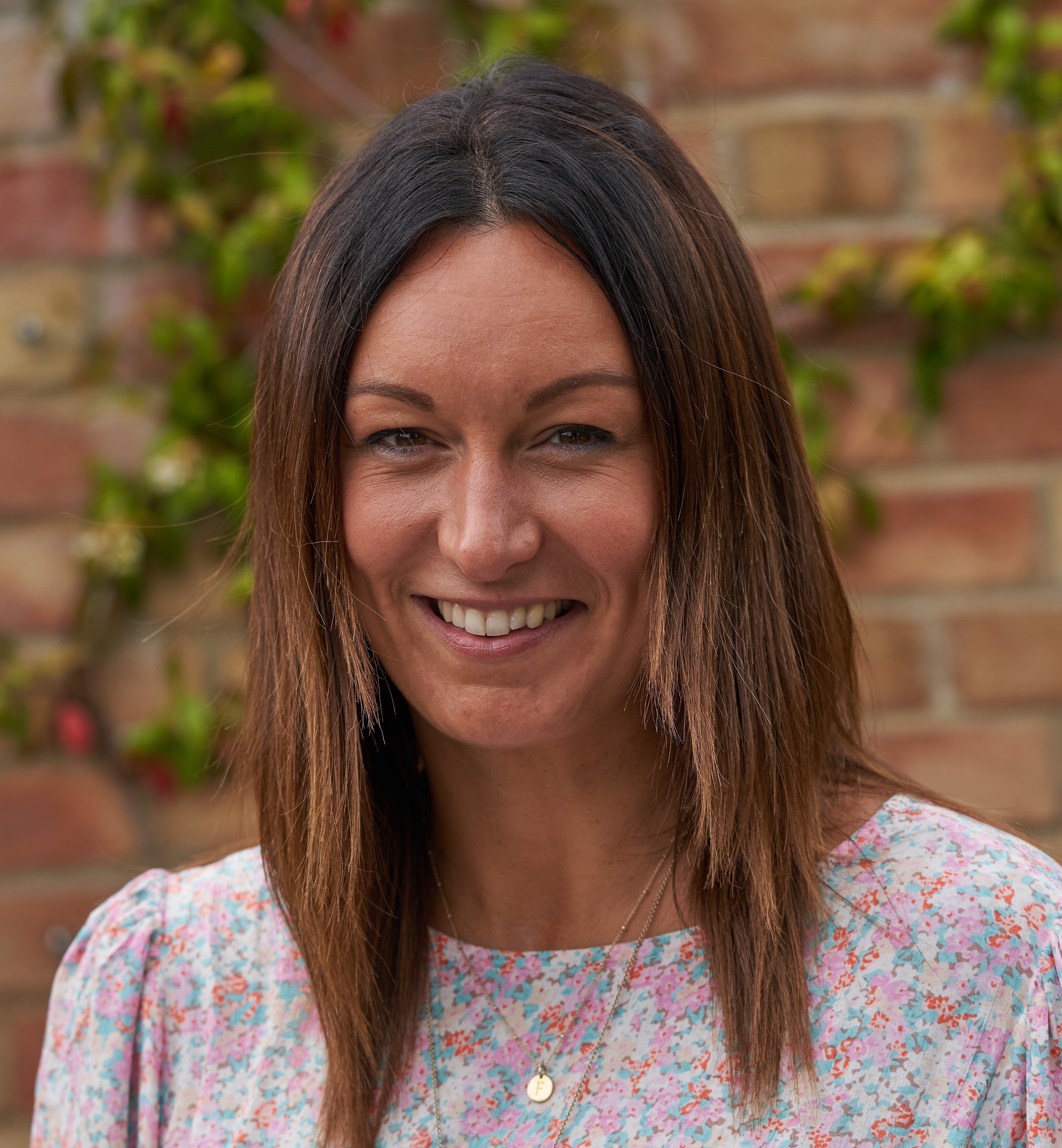
Even hotel manager Claire Fyfe is new to the industry. An interior designer by trade, she worked with Ross at Beaverbrook and was also a finalist of the 2020 MasterChef series, as well as being an abstract artist.
“She had always dreamed of running a hotel. I figured that if she is into interior design and art, she would be pretty OCD about how things should look. Too often now general managers look after spreadsheets and not guests,” says Ross.
A change of plan
When guests arrive at their bedroom door they are greeted by a recorded bird call – Ross’s idea to remind guests to close their doors properly. That’s after they break the wax seal on the door, which comes with a note attached reminding guests that the room has been electrostatically cleaned and no one has entered it since – one of the many pandemic measures in place.
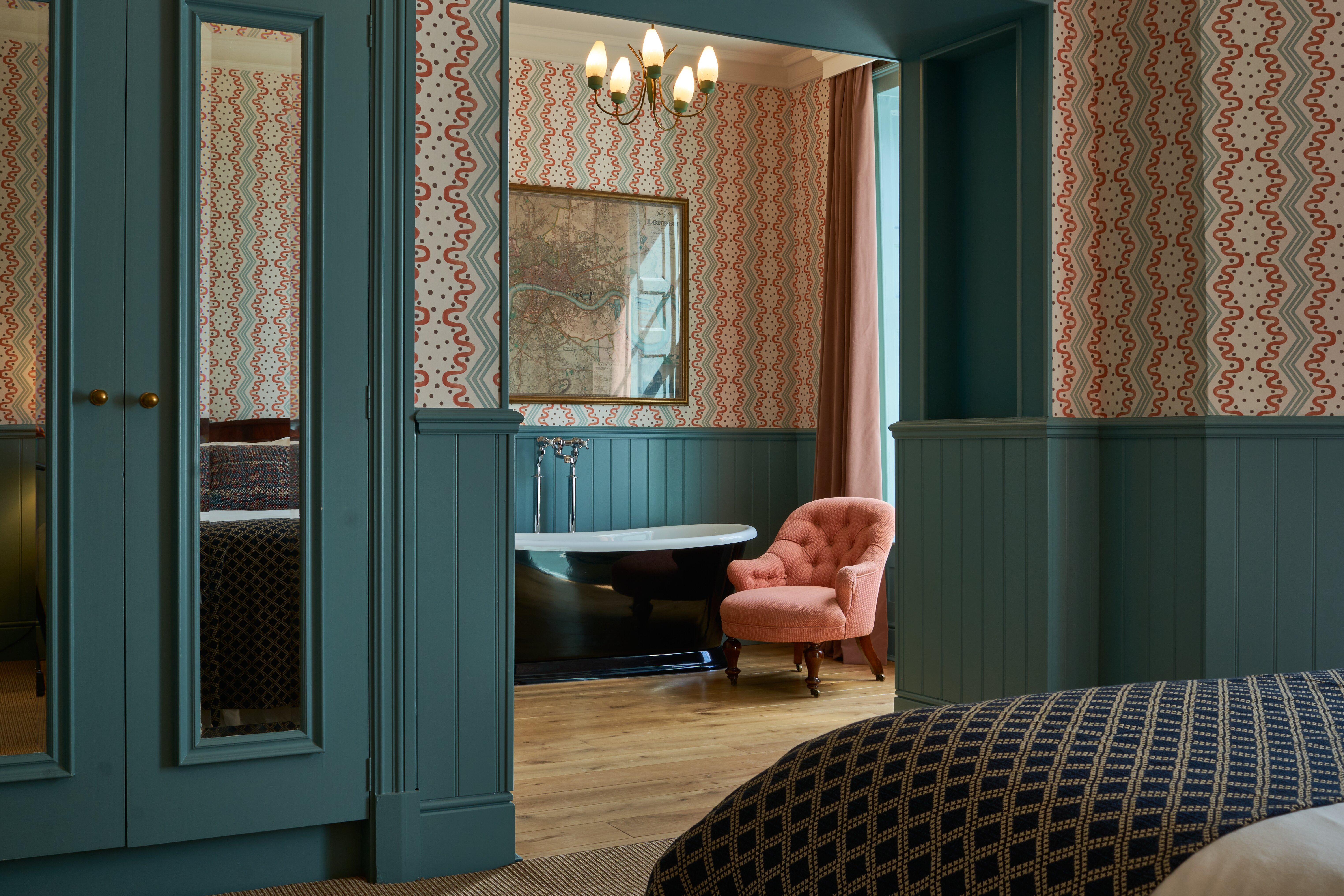
Much has changed since Ross and his team developed their initial vision for the Mitre. Pre-pandemic, the demographic would have been largely overseas visitors, made up of mostly Chinese and American guests, attracted by its proximity to key sites and Heathrow, just nine miles away. Now it’s all about the locals – and staycationers. “We were working with an American PR agency. We wanted to be included in BA High Life magazine. Now it’s all about the Surrey Advertiser.
“But we are delighted by the F&B pick-up from locals – we had 1,000 covers last week – but post-Covid, we would seek to increase seats by 30%. And we are delighted that we are filling our bedrooms with staycationers. Ronnie has been clever with adapting our plans. Coppernose was supposed to be a help-yourself salad bar, but now it’s a table service tapas-style menu, while 1665 has become more of a date-night destination. So now we are thinking long term for this concept and delivery,” reveals Ross.
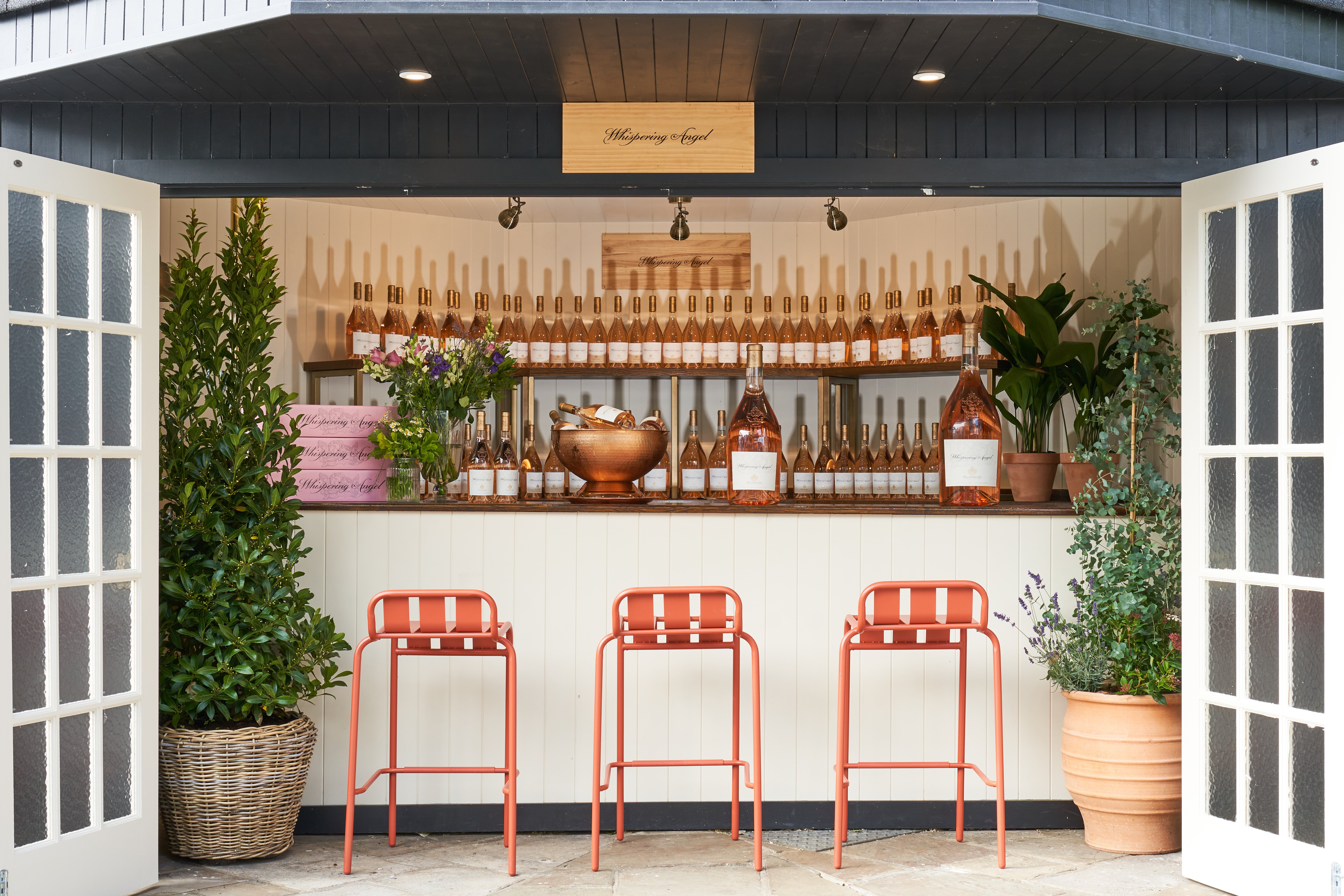
The locals are also loving the Whispering Angel bar on the Terrace. It’s the first concession for the Provence rosé brand, and a coup for Ross who is pally with its UK agent, who deemed the wine a good fit for the hotel. “It’s a lovely spot to sit and drink rosé,” shrugs Ross. “And we aren’t aggressive in the pricing, so people don’t feel ripped off.” It’s listed as £38 a bottle, while it’s £49 and upwards elsewhere.
Affable Ross has also struck up good relationships with other suppliers, such as brewer Guy Rolfe at Hampshire’s Penton Park Brewery, who brews the Mitre’s Six Wives ale, and who will oversee the on-site microbrewery Ross is planning for the hotel’s old bathing changing room.
Ross has also strengthened the hotel’s links to the palace as part of a series of ‘experiences’ they want to offer guests, another of Signet’s cornerstones. Expect (post-Covid) after-hours medieval feasts, and a residential art course. Says Ross: “We don’t want to own Signet Collection hotels for 10 years, we want to own them forever.”
Photography by Adam Lynk



